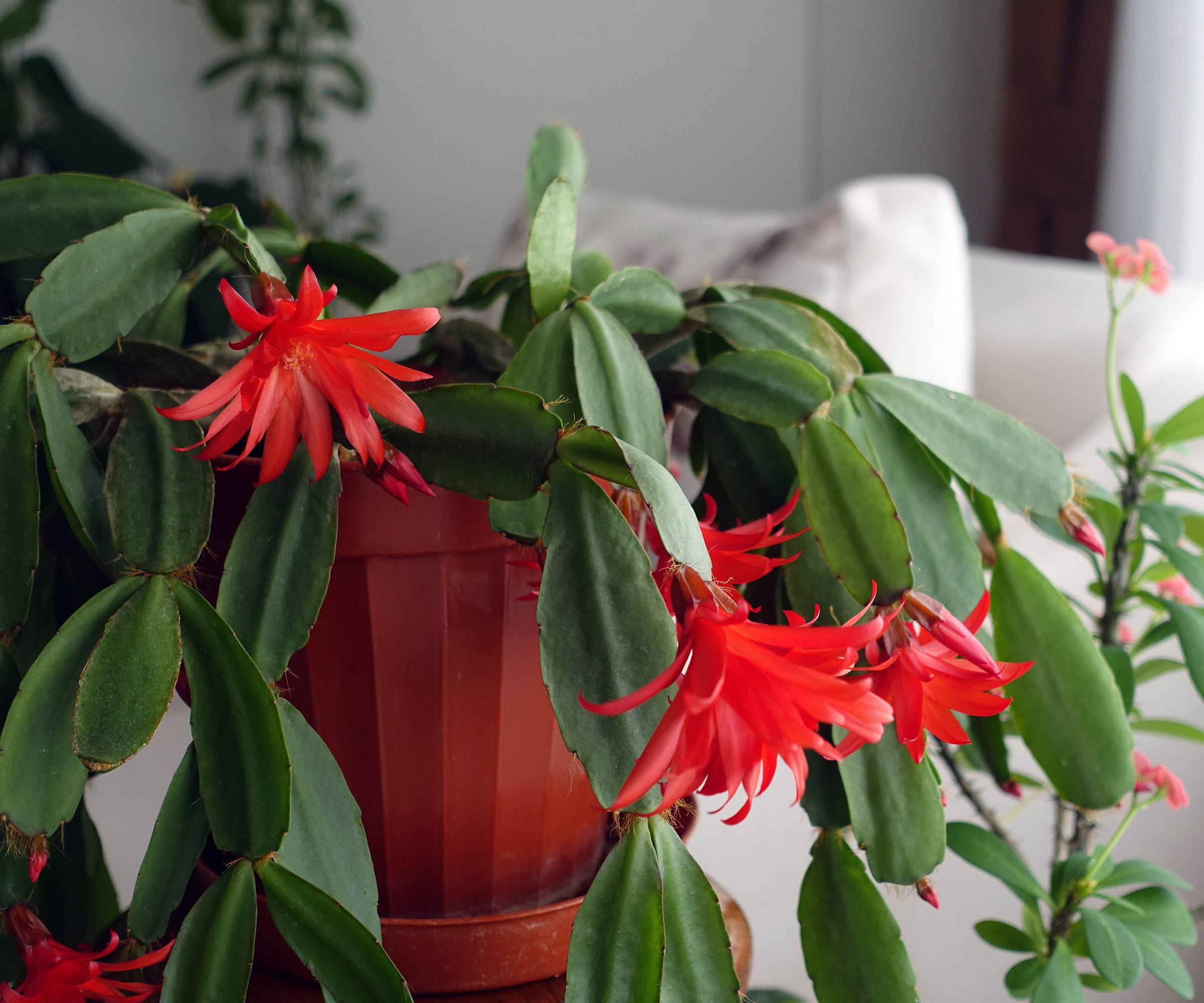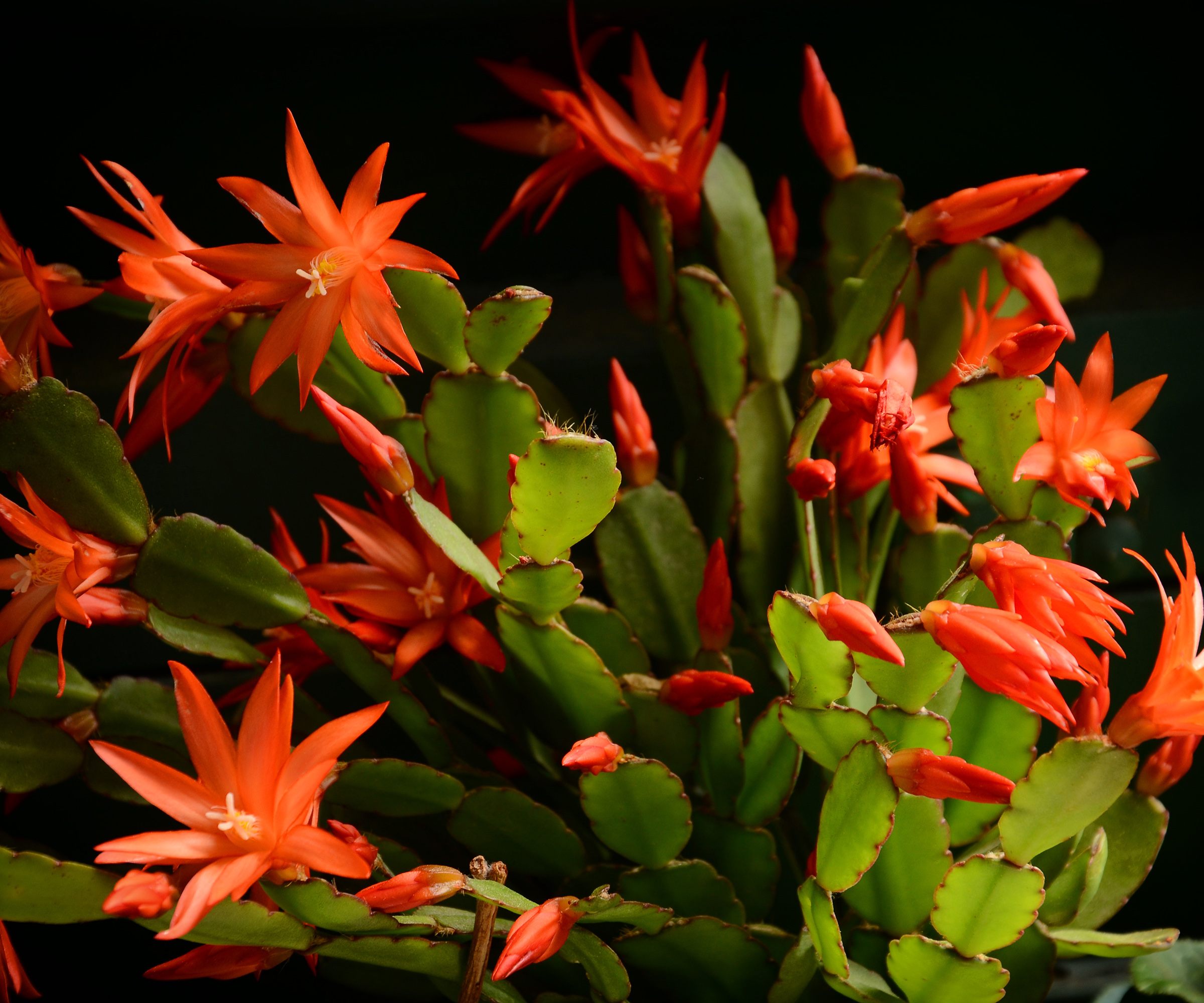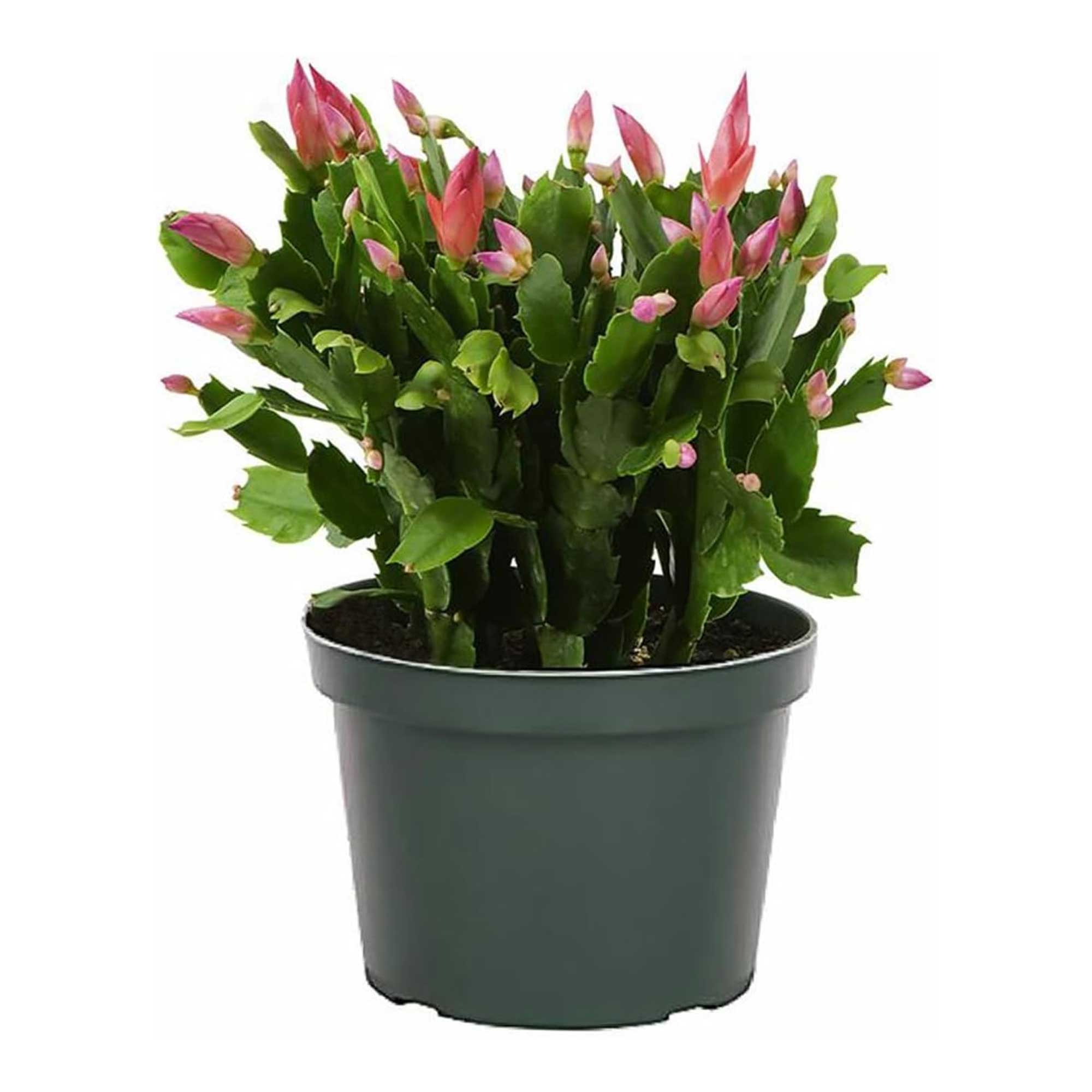Should I keep my Christmas cactus in the dark? Experts explain why it can benefit these beauties
A period of darker conditions in the fall will help these festive favorites flower year after year – here's how to try it at home


Holly Crossley
Christmas cactuses, with their trailing, scalloped leaves, make an attractive houseplant year-round. However, they look their best around Christmas time, when they adorn their vibrant blooms in red, pink, or white.
Learning how to care for a Christmas cactus correctly is key for flowers every festive season. But, another important aspect for encouraging beautiful blooms is providing long, dark nights for part of the year. While this is easier to achieve in northern climates, in southern areas you may need to take steps to reduce the amount of light your plant gets for a few weeks.
To help you go about it in the right way, and at the right time, we turned to houseplant professionals. Below, they share their practical advice, so you can enjoy your Christmas cactus’s dazzling display again and again.
Provide bright, indirect light in the day

Like many indoor plants, Christmas cactuses generally need plenty of bright, indirect light
Getting the light levels right for any indoor plant is an essential part of keeping them healthy.
Many plant parents assume that cacti need plenty of sunshine. While this is true for many varieties from desert environments, the Christmas cactus hails from rainforests, and generally thrives best in bright but indirect sunlight. In fact, too much sunshine can make their leaves go limp, as well as burn and discolor them.
How and when to reduce the light for your Christmas cactus

Long, dark nights in the fall can help encourage buds
Kiersten Rankel, an expert from houseplant-care app Greg, says, ‘While Christmas cacti don't need complete darkness to bloom, they do benefit from a period of longer nights and cooler temperatures to trigger flowering. This mimics their natural habitat in Brazilian rainforests.
‘To encourage blooming, give your Christmas cactus 12-14 hours of uninterrupted darkness each night for about six to eight weeks, starting in late September or early October,’ she says. ‘You can do this by moving the plant to a dark room or covering it with a light-proof box. During the day, provide it with its usual bright, indirect light.’
Nastya Vasylchyshyna, a resident botany expert at Plantum, notes how you can simply place your Christmas cactus on a windowsill if your region naturally gets colder and has short days followed by long nights in late fall. ‘Hide it behind a thick curtain to avoid disrupting the plant’s circadian cycle with artificial lighting,’ she adds.
Top tip: There are other factors to bear in mind to help your Christmas cactus bloom, too, including fertilizing it at the right time.

Add to your festive decor with this Christmas cactus in a 6-inch pot from American Plant Exchange. It’s perfect for brightening up your home-office desk during the holidays.

Kiersten Rankel is a certified Louisiana Master Naturalist and regularly volunteers with local community gardens and nonprofits to help restore critical ecosystems along the Gulf Coast. She earned her master's degree from Tulane University in Ecology and Evolutionary Biology after her undergraduate degree in Environmental Biology, also from Tulane. In her spare time, she enjoys hiking and tending to her 150+ houseplants and vegetable garden.

Nastya is a professional botany expert for the Plantum app that helps identify plants and plant diseases and provides care recommendations. Her specialization is plant morphology, phytopathology, and plant physiology.
FAQs
When can you expect your Christmas cactus to flower?
Once buds have appeared, it can take up to twelve weeks for the flowers to fully develop. They usually bloom between November and January, making them popular Christmas plants.
Should you water your Christmas cactus less to help it form buds?
Reducing how often you water your Christmas cactus, at the same time as reducing light and temperature, can also help encourage more blooms.
Looking for more tips to help your Christmas cactus flourish? Our guide on repotting Christmas cactuses is well worth a look, while our tips on propagating Christmas cactuses will help you get new plants for free.
Sign up to the Homes & Gardens newsletter
Design expertise in your inbox – from inspiring decorating ideas and beautiful celebrity homes to practical gardening advice and shopping round-ups.

Teresa was part of a team that launched Easy Gardens magazine two years ago and edited it for some time. Teresa has been a Gardens Editor at Homes & Gardens, Country Homes & Interiors and Living Etc magazine since 2020 and has developed close working relationships with top garden designers, and has been exposed to an array of rich garden content and expertise.
- Holly CrossleyContributing Editor
-
 This once-dated kitchen is now a timeless space with the coziest details – and its the classic color palette that's made it a chic, welcoming space
This once-dated kitchen is now a timeless space with the coziest details – and its the classic color palette that's made it a chic, welcoming spaceWarming colors and natural materials combine to create this enduringly classic kitchen scheme
By Molly Malsom Published
-
 How to grow crepe myrtle in pots – and transform even the smallest of yards with dazzling flowers this summer
How to grow crepe myrtle in pots – and transform even the smallest of yards with dazzling flowers this summerGrowing crepe myrtles in pots will inject splashes of brilliant color into your outside space
By Thomas Rutter Published